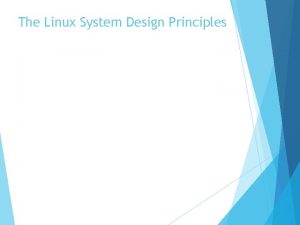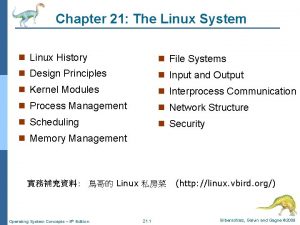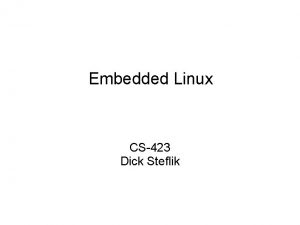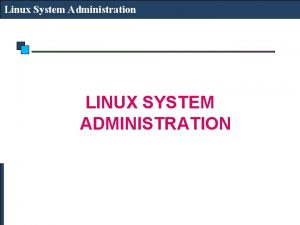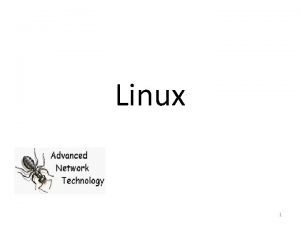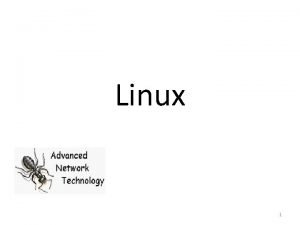The Linux System Design Principles Design Principles Linux






- Slides: 6

The Linux System Design Principles

Design Principles � Linux is a multiuser, multitasking system with a full set of UNIX-compatible tools � Its file system adheres to traditional UNIX semantics, and it fully implements the standard UNIX networking model � Main design goals are speed, efficiency, and standardization � Linux is designed to be compliant with the relevant POSIX documents; at least two Linux distributions have achieved official POSIX certification � � Supports Pthreads and a subset of POSIX real-time process control The Linux programming interface adheres to the SVR 4 UNIX semantics, rather than to BSD behavior

Components of a Linux System

Components of a Linux System n Like most UNIX implementations, Linux is composed of three main bodies of code; the most important distinction between the kernel and all other components. n The kernel is responsible for maintaining the important abstractions of the operating system l Kernel code executes in kernel mode with full access to all the physical resources of the computer l All kernel code and data structures are kept in the same single address space

Components of a Linux System (Cont. ) � The system libraries define a standard set of functions through which applications interact with the kernel, and which implement much of the operating-system functionality that does not need the full privileges of kernel code � The system utilities perform individual specialized management tasks � User-mode programs rich and varied, including multiple shells like the bourne-again (bash)

References � “Operating System Concepts, " by Abraham Silberschatz, et al, 9 th Edition, 2012, John Wiley & Sons Inc. � Operating Systems: A Spiral Approach 1 st Edition by Ramez Elmasri , A Carrick , David Levine
